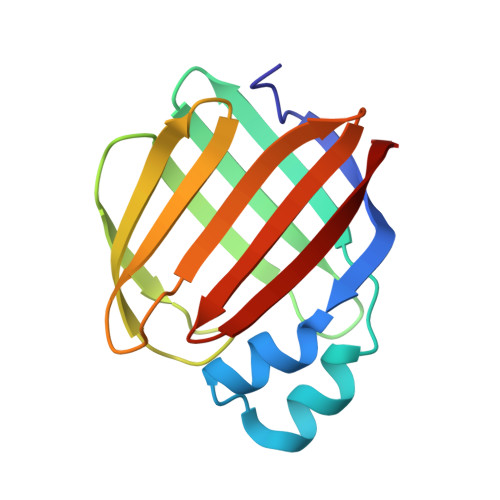Light controlled reversible Michael addition of cysteine: a new tool for dynamic site-specific labeling of proteins.
Maity, S., Bingham, C., Sheng, W., Ehyaei, N., Chakraborty, D., Tahmasebi-Nick, S., Kimmel, T.E., Vasileiou, C., Geiger, J.H., Borhan, B.(2023) Analyst 148: 1085-1092
- PubMed: 36722993
- DOI: https://doi.org/10.1039/d2an01395a
- Primary Citation of Related Structures:
8D6H, 8D6L, 8D6N, 8DB2, 8DN1 - PubMed Abstract:
Cysteine-based Michael addition is a widely employed strategy for covalent conjugation of proteins, peptides, and drugs. The covalent reaction is irreversible in most cases, leading to a lack of control over the process. Utilizing spectroscopic analyses along with X-ray crystallographic studies, we demonstrate Michael addition of an engineered cysteine residue in human Cellular Retinol Binding Protein II (hCRBPII) with a coumarin analog that creates a non-fluorescent complex. UV-illumination reverses the conjugation, yielding a fluorescent species, presumably through a retro -Michael process. This series of events can be repeated between a bound and non-bound form of the cysteine reversibly, resulting in the ON-OFF control of fluorescence. The details of the mechanism of photoswitching was illuminated by recapitulation of the process in light irradiated single crystals, confirming the mechanism at atomic resolution.
Organizational Affiliation:
Department of Chemistry, Michigan State University, 578 S. Shaw Ln., East Lansing, MI 48824, USA. babak@chemistry.msu.edu.
















